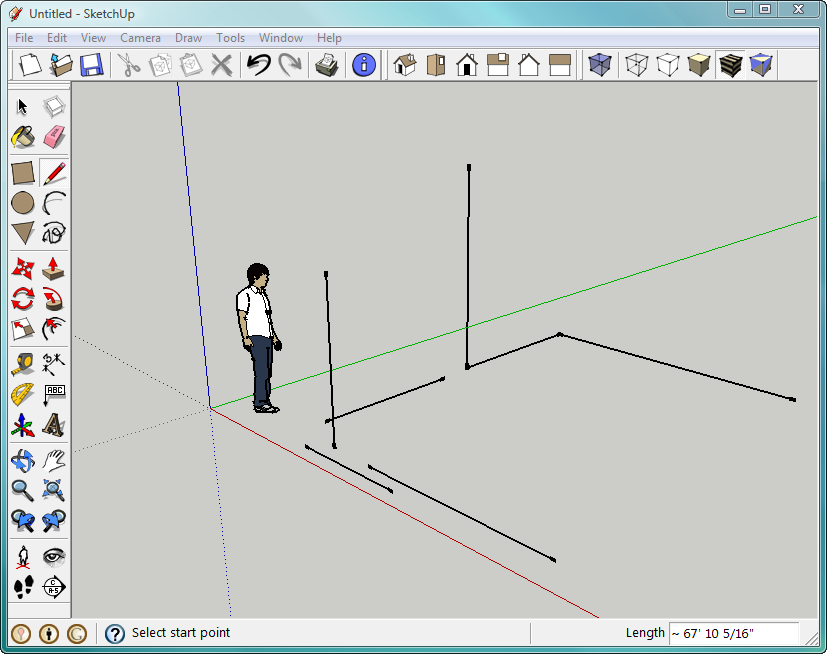Finding 3-D Inferences
In the 2-D drawings in Chapter 2, you saw how inference points and lines help you align and scale the objects you draw. When you add a third dimension to your drawings, inference lines are even more helpful. You might even say they're critical when it comes to drawing accurately and quickly. Suppose you want to scale a group of Ionic columns so they're exactly the height of a certain wall—SketchUp inferences provide a quick and easy solution (Figure 3-5).

Figure 3-4. It's easy to draw lines that snap to an axis in one of the head-on views such as Top or Front. When you want to see the 3-D relationships between objects, use the Orbit (O) tool, which gives you a perspective such as this that's below and behind Sang and his lines.

Figure 3-5. The height of these columns is set to match the height of the wall. After you select the columns and click the Scale tool, the cursor moves to a point at the top of the wall. An inference line appears when the columns are scaled to the same height as the wall.
In this exercise, you begin to create 3-D objects, starting with a simple box, and then you learn how to use inferences to speed up the process.
Open a new document, and then change the camera view to Top.
In the Top view, the red appears to run horizontally in the drawing ...
Get Google SketchUp: The Missing Manual now with the O’Reilly learning platform.
O’Reilly members experience books, live events, courses curated by job role, and more from O’Reilly and nearly 200 top publishers.

